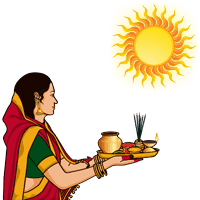What is Chhath Puja?
Political leaders, including President Droupadi Murmu and Prime Minister Narendra Modi, extended their warm wishes to the public on November 19 for Chhath Puja, the concluding day of the four-day Chhath festival. Once confined to Bihar and parts of eastern Uttar Pradesh and Nepal, Chhath has gained prominence nationwide over the past decade.
Beliefs Behind Chhath
- Chhath Puja is a four-day celebration dedicated to honoring the Sun.
- Devotees observe a rigorous fast, abstaining from water, and make offerings to Usha and Pratyusha, representing the rising and setting Sun, while standing in a water body.
- Historical references from the times of Lord Ram, Goddess Sita, Draupadi, and Karna link the festival to prayers for divine blessings.
Festive Offer
- Chhath epitomizes religiosity in Bihar, fostering community participation.
- While some observe the fast, the entire community engages in festival preparations, including cleaning riverbanks, gathering ritual items, and preparing thekuas (prasad).
How Chhath is Celebrated
- Chhath Puja begins on the sixth day of Kartik (October-November) or Chaitra (April).
- Chhathi maiyya, considered an exacting but generous deity, is Sun’s sister.
- Rituals include a ceremonial bath (naha kha), a 36-hour fast, and offerings of thekuas and seasonal fruits on the riverbanks.
- The festival concludes with dawn and evening offerings (arghya) to the rising and setting Sun.
Unique Features of Chhath
- Chhath symbolizes community unity, drawing Bihari migrants back to their roots.
- Observers come from all castes, with no involvement of priests; individuals directly fast and pray to the visible, apparent God.
- Offerings consist of locally produced fruits, emphasizing accessibility and equality.
- Both women and men observe the fast for God, not for family members.
- The festival’s message emphasizes equality, the importance of nature, and the cyclical nature of life.
Month: Current Affairs - November, 2023
Category: Art & Culture Current Affairs







